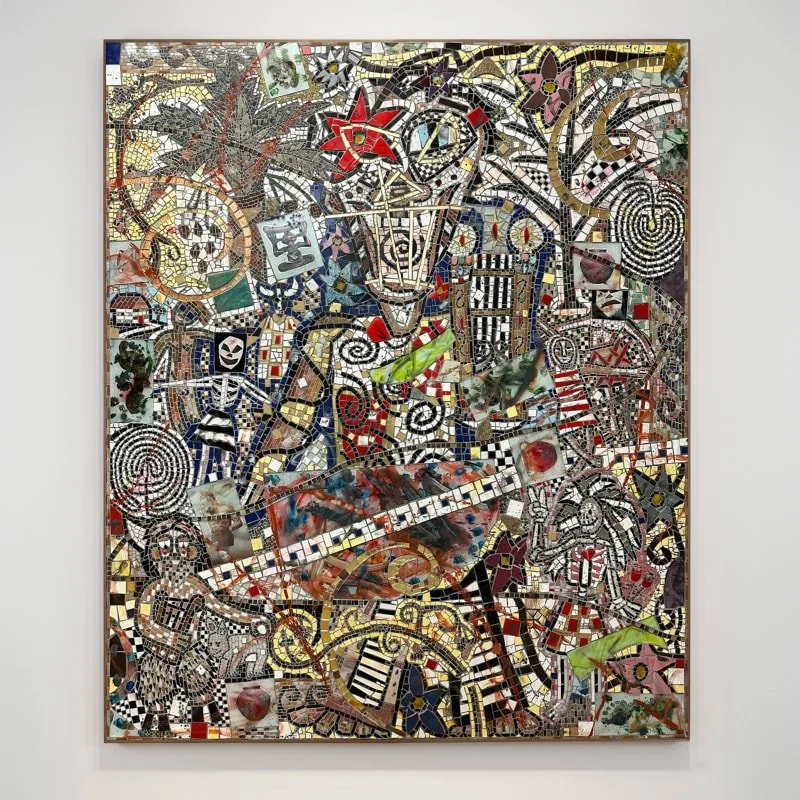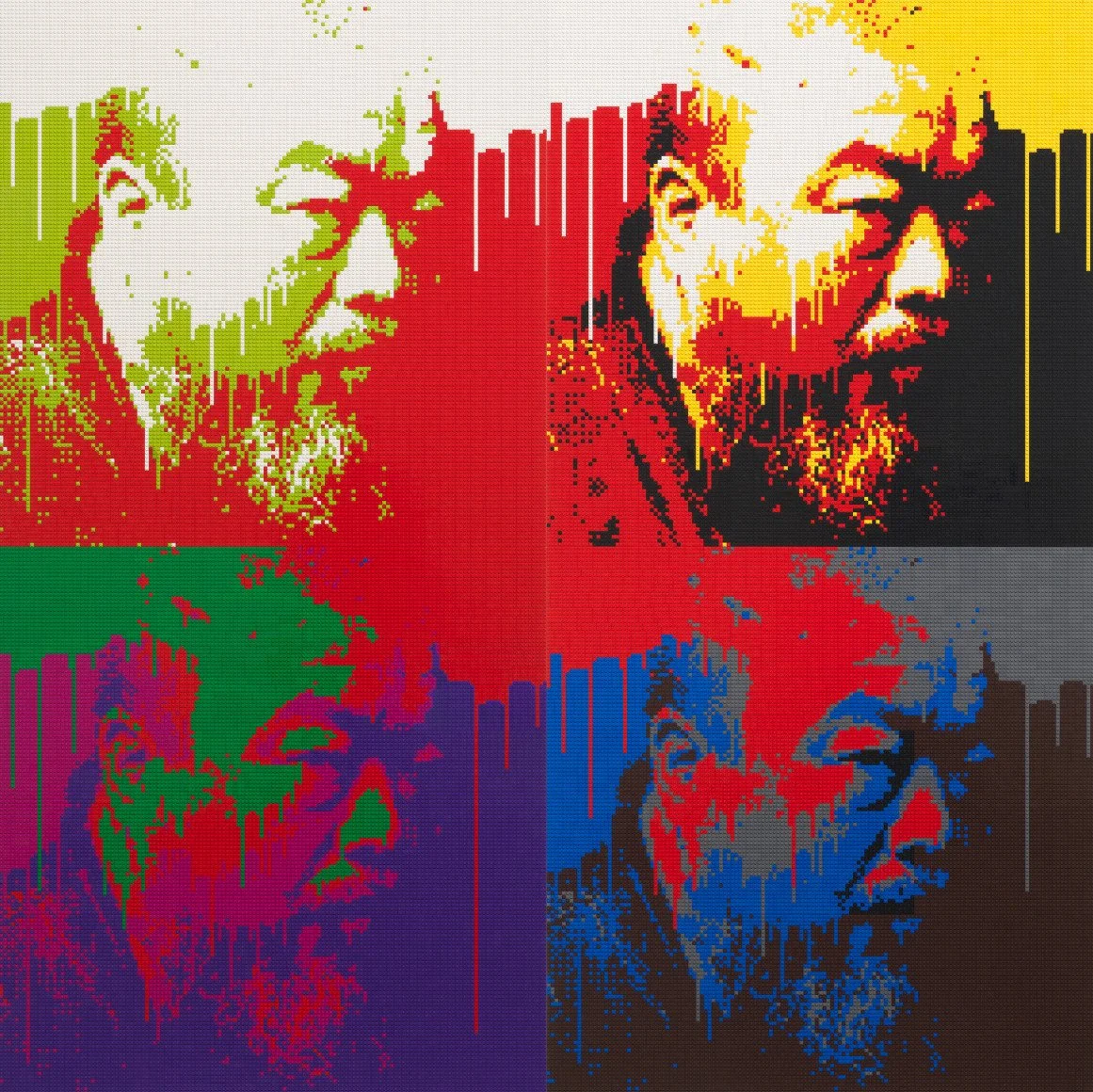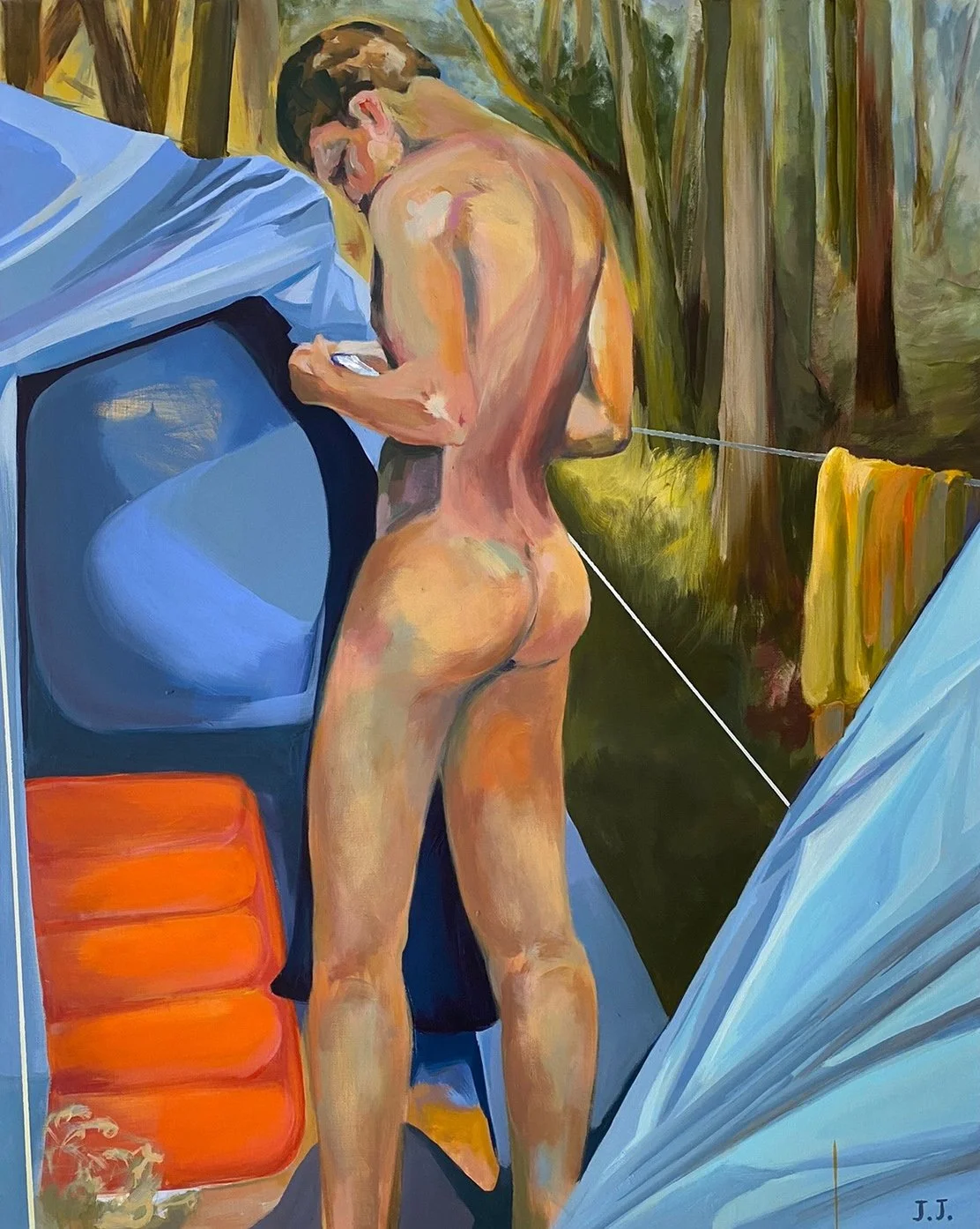Cameron Welch
“Labyrinth”
New York, 245 10th Avenue
Built around mazes, spirals, and garden motifs, the exhibition reframes the chaos of contemporary life through tropes and stories from ancient art history, taking the Labyrinth as both its theme and structure. The frenetic scenes Welch creates — made up of thousands of pieces of hand cut marble, stone, ceramic, and glass — cast a collision of modern and archaic elements that unfurl within the mire of an unruly garden maze. The artist’s material and literary combinations result in a distinctive pictorial intensity, a visual language whose commotion mirrors that of the modern era. Continuing his exploration of contemporary tumult through story and archetype, the artist hones his focus on the meandering paths of the mythical Labyrinth as a setting for this new body of work.
Cameron Welch: Labyrinth [Installation View] Yossi Milo, New York, 2024 Photo Credit: Thomas Barratt
In ancient Greek legend, the Labyrinth was an ingenious maze designed by the architect Daedalus to house the Minotaur, a monstrous half-man, half-bull creature. Theseus, the heroic prince of Athens, volunteered to enter the Labyrinth of Crete to slay the Minotaur, and was gifted a spool of golden thread to follow his path through its winding passages. Referencing Theseus’s golden thread, Welch weaves spirals and tendrils across these new works composed of glass tesserae that are gilded with gold leaf, knotting together abstracted figures and scenes with their glimmering forms. This reference to ancient liberation becomes a guide through the twists and turns of the artist’s cacophonous world.
To be featured in Labyrinth is the new mosaic “Orpheus in the Garden” (2024), in which Welch places another Greek hero within this Edenic locale. The legendary bard, musician, and prophet Orpheus appears at the work’s center, surrounded by figments of the Underworld from which he sought to rescue his wife Eurydice. The surface of the mosaic is inlaid with innumerable twisting forms, repeating swirls that resemble Vitruvian scroll motifs and the distinctive spiral of the golden ratio. The work also shows the spiral forms of labyrinths that exist today as tools for meditation: flat, looping paths walked by those who seek tranquility through a circuitous journey. In this contemplative tool, the artist represents a reflective, winding path through the density of modern confusion.
In Welch’s hands, ancient history and mythology join the modern day in a synchronous view of time, and in this context the labyrinth takes on a similarly multivalent existence. The maze becomes a trap, a metaphor, and a tool by which awareness is achieved through change. Overgrown with plant life, tied with golden threads, and populated with heroes and monsters alike, Welch’s labyrinthine world is a place of confusion, yet it is also a space rife for growth and exploration







